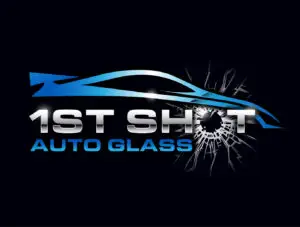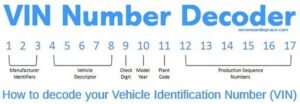How does using the VIN affect the accuracy of service quotes for auto glass replacement?
The VIN provides detailed information about the vehicle that helps in generating an accurate quote for the replacement service, ensuring transparent and precise billing.
What could happen if incorrect auto glass is installed?
Installing the wrong auto glass can lead to issues such as reduced visibility, weakened vehicle structure, and potential legal problems due to non-compliance with safety standards.
Why is it important to check the VIN before dispatching a technician for auto glass replacement?
It’s essential to ensure the technician brings the correct type of glass, preventing the unprofessional and costly scenario of arriving with the wrong type.
Decoding a VIN
Decoding a Vehicle Identification Number (VIN) requires understanding its structure and the information encoded within it. 1st Shot Auto Glass uses a decoder to determine the features on a windshield. For your information, here’s a general guide on how to decode a VIN:
-
- Locate the VIN: The VIN is typically located on the driver’s side dashboard, visible through the windshield. It can also be found on the driver’s side door jamb, vehicle registration documents, insurance cards, or title.
- Understand the VIN Structure: A VIN consists of 17 characters (digits and capital letters) that represent specific information about the vehicle. The VIN is divided into several sections, each providing different details about the vehicle’s make, model, year, assembly plant, and more.
Decoding the Characters:
-
- First Character (Country of Origin): The first character represents the country where the vehicle was manufactured. For example, 1, 4, and 5 indicate the United States, while 2 represents Canada.
-
- Second Character (Manufacturer): The second character identifies the manufacturer or carmaker. Each manufacturer has its unique code.
-
- Characters 3-8 (Vehicle Descriptor Section): These characters provide information about the vehicle’s attributes, including its make, model, body type, engine size, and more. Each manufacturer uses these characters differently.
-
- Character 9 (Check Digit): This character is used to verify the accuracy of the VIN. It is calculated based on a mathematical formula applied to the other characters.
-
- Character 10 (Model Year): The 10th character represents the model year of the vehicle. It can be a letter or a number, with each representing a specific year.
-
- Character 11 (Assembly Plant): This character identifies the factory where the vehicle was assembled.
-
- Characters 12-17 (Production Sequence Number): These characters represent the vehicle’s unique serial number, indicating its production sequence.
-
-
- Use Online VIN Decoding Tools: There are many websites and online tools available that can help decode VINs. These tools often provide detailed information about the vehicle’s specifications, including its make, model, trim level, engine type, transmission, and more.
-
- Consult Manufacturer Resources: Some manufacturers provide VIN decoding tools or databases on their official websites. These resources can offer more detailed information specific to the manufacturer’s vehicles.
By understanding the structure of the VIN and decoding its characters, you can uncover valuable information about a vehicle’s history and specifications, especially for a windshield replacement. Whether you’re buying a used car, seeking replacement parts, or performing maintenance, decoding the VIN can provide essential insights into the vehicle’s identity and characteristics.


 Decoding the Characters:
Decoding the Characters: